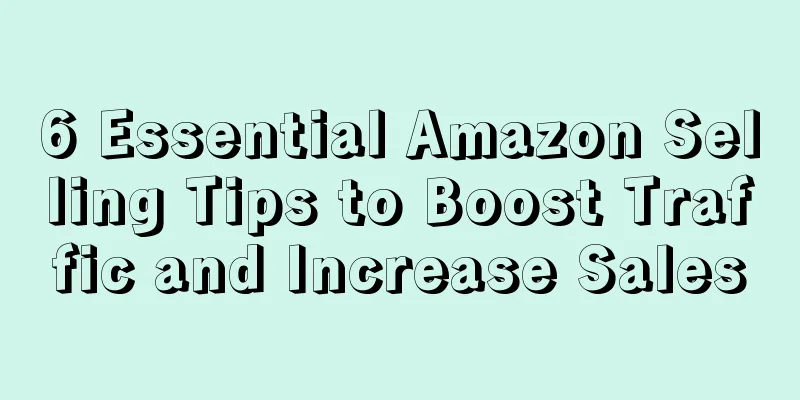Amazon is now the first place most online shoppers visit on their shopping quest. That’s according to a 2,000-person survey conducted by BloomReach, which found that about 55% of people start spending by searching the marketplace.
Want to turn those browsers into buyers? Here’s our roundup of the best tips for optimizing your Amazon SEO and increasing sales.
1. Keyword Research
Anyone can set up an Amazon seller profile, but not everyone has the business acumen to make it successful.
Keyword research is essential to achieving success. Once you’ve found your high-value keywords, you can learn how to incorporate them into every aspect of your profile page to get your product to market.
Ultimately, Amazon’s passion for delivering the right product selection to the right customer explains why it’s not as simple as it should be.
According to JungleScout, humans generally don't like reading long sentences. But with Amazon’s algorithm, long sentences could mean that the online seller has strategically included all the relevant search terms for that product. These terms may already be included in the title, description, or even the image.
Before you get up and running on Amazon, you need to do serious competitor and industry research. Don’t overwhelm yourself trying to find the best keyword research tools: BigCommerce has written an extensive guide on how to manage the Amazon search engine.
2. Mobile Optimization
People tend to think about optimization as it relates to desktops, forgetting that 63% of millennials use mobile devices to shop online. With this in mind, there are several things you can do when it comes to mobile optimization.
Similar to the process of optimizing images, titles, and descriptions to appeal to desktop views, you must always check that everything looks its best when viewed on a mobile device. Consider that everything about an Amazon product page will look different on a smartphone and a tablet. There are a few things to note about the differences in appearance between desktop and mobile:
Image size
Amazon Product Search
Amazon Product Detail Page
For more information on the differences between desktop and mobile when it comes to product visibility, check out CPC Strategies.
3. Split Testing
When it comes to Amazon, you can’t win with anything, especially if it’s going to affect your profit margins — that’s what split testing is for.
Generally speaking, when you perform split or A/B testing on your website, you choose a specific element and create two or more versions to test in order to determine the best option moving forward.
Amazon is a completely different ball game. You can test images, title descriptions, and prices, and run several tests.
Just remember that split testing isn’t something you can check off your to-do list and stop there. You have to test it consistently for it to be truly effective, with the ultimate goal of improving a metric, such as click-through or conversion rate.
4. Run promotions to increase sales velocity
Everyone loves a promotion, right? But it’s not just special days like Black Friday, Mother’s Day, and post-holiday sales that they’re hoping for, you should also consider running promotions at random times of the year
On one hand, it helps your overall business, increases brand awareness, retains existing customers, and attracts new ones. But let’s face it, it’s also great for getting rid of stale inventory.
Let’s step back for a moment and discuss sales velocity.
It sounds complicated, but breaking it down clearly illustrates what you should consider when increasing sales through promotions:
Number of leads
Average transaction size
Your conversion rate
The length of your sales cycle
If you keep these factors in mind, it will give you a better range of what types of promotions you can afford. Amazon is very encouraging of marketplace transactions as long as you follow the rules. If you need some promotion ideas, check out what Shopify has come up with.
5. Sales level
As an Amazon seller, you want your products to rank fast! Ultimately, it comes down to optimizing your profile in every way possible so that it’s easier for online shoppers to find it. But the real trick here is winning the Buy Box.
This is the top point that online sellers always want to reach and stay at, but how? If you want to improve your ranking to increase your chances of winning the Buy Box, you must first meet Amazon’s expectations. Check out the guide below to learn more.
6. Add product reviews
According to a survey by BrightLocal, 85% of consumers said they read up to 10 reviews before trusting an e-commerce business, stressing the need for online sellers to be consistent with the quality and quantity of reviews. To do this, you have to be strategic about the types of customers you engage with.
As Amazon expert and current online seller Phil Masiello says, “Buyers trust reviews, and Amazon has trained consumers to look for and use reviews. Plus, you’ll appear below other sellers of similar items who have good reviews. Those are valuable reviews.”
For example, if you just dealt with a client and they were happy with the experience, it would be a good idea to do a review. However, if you're processing an order that has at least one support ticket filed out of confusion or complaint, asking for a review in that situation isn't the best idea.
The whole process is much easier when you have a system that automates review requests for you.
“To get reviews, you need a good feedback system,” Masiello said. “Communicating with buyers is critical to getting reviews and turning bad reviews into good ones.”
That being said, you want to make sure you have a variety of views so that your customers have realistic expectations of your products and overall service.

